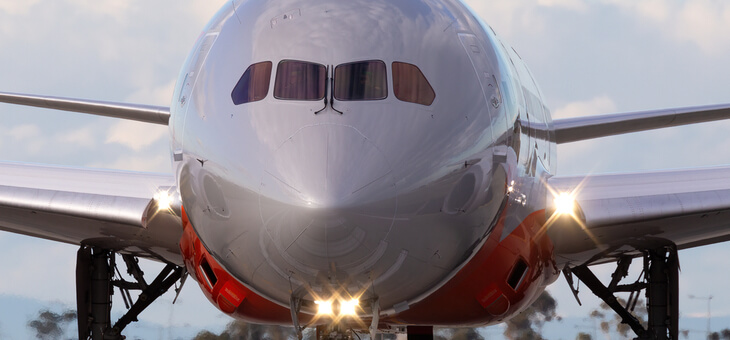International borders may soon open but foreign airlines may not be able to take you overseas, Australian airports have warned the federal government.
They say foreign carriers are at risk of pulling out of Australia even as we reopen international borders. This would lead to fewer seats and higher prices unless the government sets some clear guidelines and plans for the future of Australian tourism.
And even if you can snag a flight, your passport may not guarantee you an exit.
Trade and tourism minister Dan Tehan also says high demand may lead to long wait times for Australians needing to renew their passports before they can get on a plane.
“The department is doing everything it can to prepare but longer than usual processing times can’t be ruled out … once you’re fully vaccinated, it’s time to dust off your passport and make sure it is still valid,” he says.
The minister this week also announced new arrival declarations that will replace incoming passenger cards and COVID-19 travel declarations, which will capture information such as vaccination status.
Read: What you need to do to be vaccination passport ready
Australians will use myGov to upload proof of vaccination to a QR code linked to their passport.
“Where you’re required to prove you’re vaccinated – when you’re travelling overseas to get entry into countries – that QR code will be able to demonstrate you are vaccinated,” Mr Tehan told Radio National.
Once Australia’s quarantine system, which is currently under review, and 80 per cent of Australians are vaccinated, Australia’s borders could feasibly open.
‘Cautious reopening’ could include a series of bubbles with Singapore, the Pacific Islands, Japan, South Korea, the United Kingdom and United States.
However, the airport sector is concerned about a lack of preparation for the resumption of overseas travel.
Vaccinated Australians who travel to those places will be able to quarantine at home upon their return, but quarantine arrangements for those who travel to other countries have not yet been decided.
It is likely countries will be graded by COVID risk and ‘proportionate’ quarantine requirements would apply.
Victorian Premier Daniel Andrews said the home quarantine period for those returning from low-risk countries could be as low as two to four days.
Read: The COVID-19 ‘vaccine passport’ is coming. Here’s how it will work
Regardless, the Australian Airports Association (AAA) is doubtful the government’s reopening plan is sound. It has also expressed concern that airlines will not have long enough lead times or sufficient capacity available to re-establish and restart flights.
“Some international carriers are either already drawing down capacity or preparing to withdraw from Australian ports altogether,” stated the AAA.
“Given the aviation industry has long [six to 12 months] lead times for carriers and airports to re-establish international routes, significant planning will need to occur now to ensure airports and airlines are ready.”
Sydney Airport added: “It is crucial Australia remains in the minds of airlines’ network planners, and therefore we need to be outlining what re-opening in Australia looks like now.”
Each international flight is currently incurring an average loss of $5000 each time it lands in Australia. And concerns about handling ‘red lane’ arrivals from high-risk locations and ‘green lane’ arrivals have airports worried foreign carriers will forfeit Australia in favour of countries with much clearer guidelines.
“If they don’t know what the rules or protocols will be for Australia eight or nine months from now, we could lose them for 2022. Then we’re looking at 2023,” said AAA chief executive James Goodwin.
“Even if we are talking about being open the middle of next year, those conversations need to be happening now,” he said.
“The reality is when we are ready to open up, we may not have as many airlines as we were used to. We may find airfares will be more expensive and we may find we have difficulty getting tourists into Australia.”
In the meantime, samples of Australia’s vaccine certificates are being shared with border and health authorities around the world to ensure they are compliant when Australia’s borders reopen.
Read: Loophole revealed in Australia’s vaccine certificates
The certificate will display passport numbers and necessary vaccination details specified in the global standard and endorsed by the World Health Organization.
“We want to get this tested and trialled with as many like-minded countries as possible,” said Mr Tehan.
“[The certificates] will go to our overseas network of embassies. We are very keen to get things in place with Singapore, the Pacific Islands – Fiji, Vanuatu, Samoa, the Solomons and the Cook Islands – as well as Japan, South Korea, the US and the UK.”
More deals are expected in the coming months, with the European Union a target, pending vaccine certificate compliance.
Where would you like to go first? Are you surprised the government is not prepared for the resumption of international travel? Why not share your thoughts in the comments section below?
If you enjoy our content, don’t keep it to yourself. Share our free eNews with your friends and encourage them to sign up.

